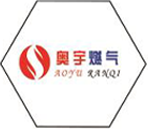
Nov . 17, 2024 03:36
Back to list
Understanding the Function and Importance of Relief Valves in Pressure Systems
Understanding Relief Valves Their Importance and Functionality
Relief valves are critical components in various engineering systems, particularly in industries that handle pressurized fluids, such as oil and gas, chemical manufacturing, and water treatment. Their primary function is to protect equipment and maintain safety standards by controlling and regulating excessive pressure within a system.
A relief valve is designed to open automatically when the pressure in a system exceeds a predetermined limit. This excess pressure may result from thermal expansion, pump failures, or unexpected operational changes. By opening and allowing fluid to escape, relief valves prevent pressure buildup that could lead to potential equipment failure or catastrophic accidents.
There are several types of relief valves, including pressure relief valves (PRVs), safety valves, and safety relief valves. Each serves a slightly different purpose but fundamentally aims to ensure that systems operate within safe pressure ranges. While a pressure relief valve is primarily used to reduce and stabilize pressure, safety valves are designed to provide a quick release of pressure, typically in high-risk environments. Safety relief valves, on the other hand, combine features of both PRVs and safety valves, thus serving dual purposes.
relief valve

The design and selection of a relief valve are crucial to an operation’s efficiency and safety. Factors such as fluid type, temperature, and the system’s pressure parameters influence the choice of relief valve. Additionally, the size of the valve and its set pressure must align with the requirements of the system to ensure effective performance. Selecting an improperly sized relief valve can result in inadequate protection or, conversely, unnecessary interruptions to the process.
Regular maintenance and testing of relief valves are vital to ensure their reliability. Over time, wear and tear can affect the valve’s performance, potentially leading to failures when they are most needed. Routine inspections, proper installation, and adherence to manufacturer guidelines will greatly enhance the longevity and functionality of these devices.
In summary, relief valves play a pivotal role in maintaining safety in pressurized systems. Their ability to release excess pressure protects both personnel and equipment from dangerous conditions. Understanding their significance and ensuring their proper operation is essential for any company dealing with pressurized fluids. By prioritizing the implementation and maintenance of relief valves, industries can promote operational safety, efficiency, and reliability, thereby safeguarding their investments and protecting their workforce.
Next:
Latest news
-
Safety Valve Spring-Loaded Design Overpressure ProtectionNewsJul.25,2025
-
Precision Voltage Regulator AC5 Accuracy Grade PerformanceNewsJul.25,2025
-
Natural Gas Pressure Regulating Skid Industrial Pipeline ApplicationsNewsJul.25,2025
-
Natural Gas Filter Stainless Steel Mesh Element DesignNewsJul.25,2025
-
Gas Pressure Regulator Valve Direct-Acting Spring-Loaded DesignNewsJul.25,2025
-
Decompression Equipment Multi-Stage Heat Exchange System DesignNewsJul.25,2025

